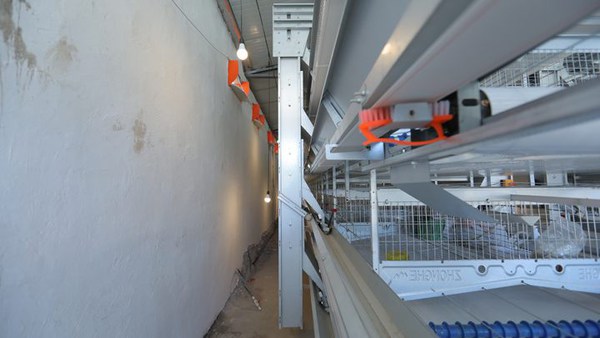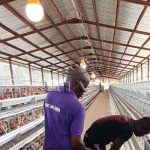For commercial poultry farmers in Zimbabwe, egg production is more than just a routine—it’s the backbone of profitability. Yet, many farmers face persistent challenges that silently erode their profits: frequent chicken diseases, low egg yield, high feed wastage, and rising labor costs. The culprit is often overlooked—aging or poorly designed chicken layer cages.
Take the story of Tawanda, a poultry farm owner in Harare. His farm housed over 5,000 layers, but despite diligent care, egg production remained inconsistent. Cleaning the old wooden cages was a daily struggle, feed was being wasted, and mortality rates were climbing. Tawanda realized that to scale his farm sustainably, he needed a modern, reliable solution.

What Commercial Farmers Face?
- Health Risks and Mortality:
Crowded or poorly ventilated cages accelerate disease spread. Even minor outbreaks can reduce productivity dramatically. - Labor and Maintenance Challenges:
Manual cleaning and egg collection increase labor hours, which inflates operational costs. - Feed and Resource Waste:
Old or low-quality cages often lead to feed spillage and inefficient water distribution, raising costs and lowering feed conversion rates. - Low Return on Investment:
Investing in cheap equipment may save money upfront, but frequent replacements and productivity losses outweigh initial savings.
How to Choose the Right Chicken Layer Cages
When evaluating chicken layer cages for sale in Zimbabwe, farmers must weigh several key factors:
- Material Durability:
Opt for corrosion-resistant materials like galvanized steel or PVC-coated wire. These withstand Zimbabwe’s humid conditions and cleaning routines. - Design for Efficiency:
Look for cages that simplify feeding, watering, egg collection, and manure removal. Automatic or semi-automatic systems can save hundreds of labor hours per year. - Stocking Density and Welfare:
Correct spacing ensures healthier layers and higher egg production. Avoid overcrowding—it reduces egg quality and increases stress. - Compatibility with Existing Systems:
Ensure the cage design works seamlessly with feeders, drinkers, and lighting systems to maintain optimal production cycles.

Solutions and Strategic Approach
Investing in high-quality layer cages is a long-term decision. Consider the following:
- Comprehensive Supplier Support:
Choose a supplier who provides installation guidance, training, and maintenance support. This reduces downtime and ensures your system operates efficiently. - Integrated Equipment Packages:
Suppliers like LIVI offer complete poultry equipment solutions, not just cages. This includes feeding systems, drinking lines, and manure management tools, all designed to work together.
LIVI Advantage: Trusted Poultry Equipment for Zimbabwean Farmers
LIVI has extensive experience supplying commercial poultry farms across Zimbabwe with durable, efficient, and high-yield layer cages. LIVI’s designs focus on:
- Long-lasting materials to reduce replacement frequency
- Ergonomic layouts that simplify operations
- Compatibility with both small-scale and industrial farms
- Reliable customer support and after-sales service
By choosing LIVI, farmers like Tawanda can modernize their operations without the guesswork.

Expected Outcomes and ROI
Switching to modern layer cages leads to measurable improvements:
- Higher Egg Production: Healthier, stress-free layers produce more consistent eggs.
- Lower Labor Costs: Automated collection and cleaning reduce manual work.
- Reduced Feed Wastage: Optimized feeding and drinking systems improve feed conversion rates.
- Long-Term Cost Savings: Durable equipment reduces frequent replacements and maintenance.
In Tawanda’s farm, installing LIVI layer cages increased egg production by 25% within six months, while labor requirements dropped by 40%.
Call to Action
Discover how LIVI’s chicken layer cages can boost your farm efficiency in Zimbabwe. Contact LIVI today to explore custom solutions that match your farm size and production goals.






